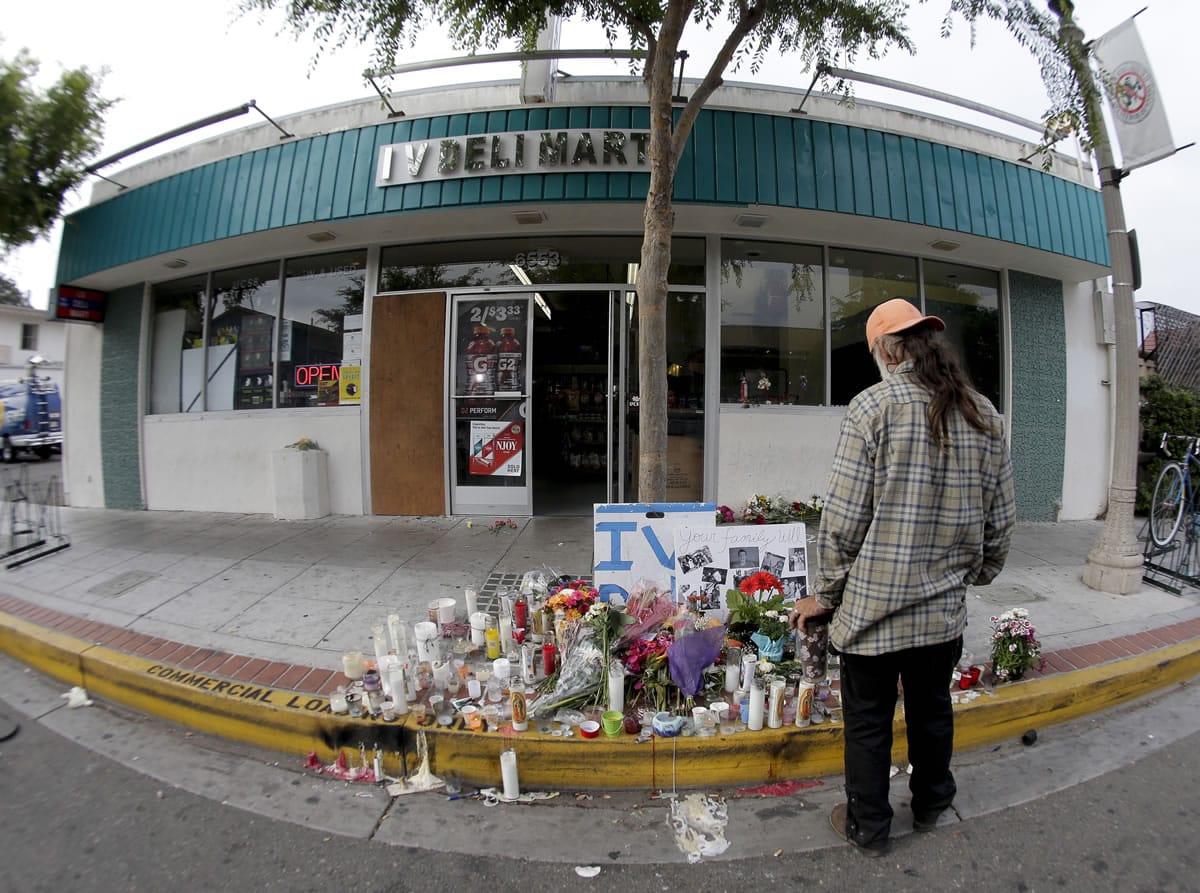GOLETA, Calif. — Colorado movie theater shooter James Holmes. Sandy Hook school attacker Adam Lanza. And now Elliot Rodger.
All were young loners with no criminal history who went on shooting sprees, leaving devastated families in their wake.
Mass murderers tend to have a history of pent-up frustration and failures, are socially isolated and vengeful, blaming others for their unhappiness, experts say.
“They all display deluded thinking and a lot of rage about feeling so marginalized,” James Garbarino, a professor of psychology at Loyola University Chicago, said in an email.
Since mass killings are rare, scholars say there’s no way to predict who has deadly intentions, let alone who will reach a breaking point and take action.
Past violence is a clue, but in Rodger’s case, police did not see him as a threat to himself or others during a welfare check weeks before Friday night’s rampage near the University of California, Santa Barbara that left six victims dead and 13 injured.
Rodger died of an apparent self-inflicted gunshot wound to the head after a shootout with deputies, ending a night of terror in this tight-knit seaside campus community as the semester drew to a close.
Before Rodger stabbed three male UCSB students in his apartment and cruised around in his black BMW firing at sorority girls and strangers, he left a trail of YouTube videos and a 140-page manifesto ranting against women and couples and lamenting his lack of a sex life.
In his postings, Rodger, a 22-year-old community college student and son of a Hollywood director, said he was a lonely and frustrated virgin.
“I’m sexually attracted to girls. But girls are not sexually attracted to me. And there’s a major problem with that — a major problem. That’s a problem that I intend to rectify. I in all my magnificence and power, I will not let this fly. It’s an injustice that needs to be dealt with,” Rodger said in one of the videos.
Recent mass shootings involved young men described as loners who had trouble fitting in.
In July 2012, 24-year-old Holmes opened fire at a midnight screening of a Batman film, killing a dozen moviegoers. Five months later, 20-year-old Lanza shot 20 first-graders and six educators at Sandy Hook Elementary School in Connecticut.
Experts who study mass murderers say the vast majority of lonely and angry people don’t commit violence, which makes it difficult to know who will snap.
“We can point to all the warning signs we missed. But they’re yellow flags. They’re not red flags until blood is spilled,” said James Alan Fox, a criminal justice professor at Northeastern University who has written several books on mass murders.
Before the killings, Rodger’s mother became alarmed about bizarre videos he posted and alerted authorities in April. But Rodger was able to convince deputies that he was not a risk to himself or others — conditions that would have allowed them to take him into custody under California law.



